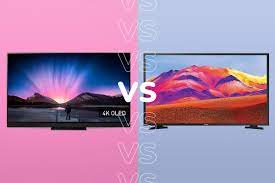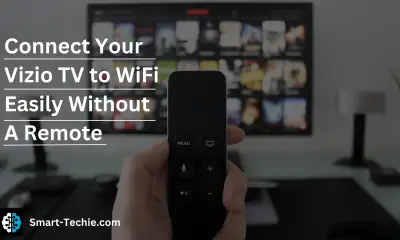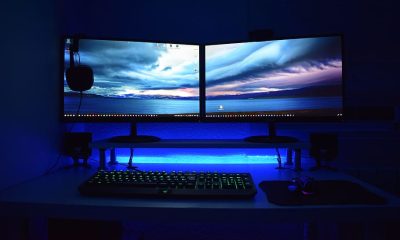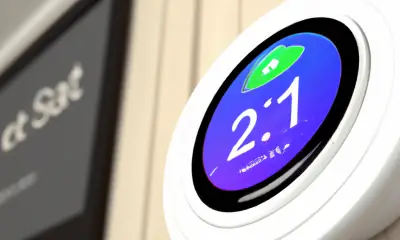Comparison
What Is The Difference Between Nanocell And Oled? And Which One Is Better?

It seems like there’s a whole new lexicon of TV-related words to learn every year. While organic light-emitting diode (OLED) screens have been around for some time, LG’s newest marketing ploy is called Nano Cell.
When we originally read this, we didn’t understand what it meant, so we looked it up. This is what we have uncovered.
In Comparison To OLED, What Is Nano Cell?

For a crisper and clearer picture, Nano Cell TVs feature Backlit LED-LCD screens that have been coated with unique material.
OLED is a newer technology, and OLED televisions produce their illumination. The visual quality of an OLED TV is superior, while a Nano Cell TV may have better brightness.
Comparative footage of the two screens that you can see on YouTube does not do either of them credit. While viewing a typical movie or program on two screens side by side, it might be difficult to see the variations.
It is possible to see the distinctions more quickly with the use of specialized test patterns, and of course, it helps to know what to look for. This article will aid you in finding the information you need since it will tell you what to search for.
Here’s a quick rundown, and then I’ll explain everything in further depth.
LG’s Nano cell

While it is best recognized for its OLED display technology, LG has been extensively advertising their new LCD technology, Nano Cell. The specifics are being kept under wraps, but it has people talking.
LG’s Nano Cell TV screens include two different technologies.
To begin, there are wide-viewing-angle IPS LCDs. The second method is the incorporation of particles into the screen that absorb the spectral components of the light being emitted, so expanding the visible color spectrum.
The specifics of LG’s Nano Cell technology are a trade secret the company would rather keep to itself. All LG says about their tech is this:
What Are Nano Cells?
By the utilization of tiny particles, LG’s Nano Cell technology filters out distracting blue light without distorting the reds and greens on the screen. Moreover, they provide more nuanced, realistic colors that maintain their integrity even at extreme angles of view.
In other words, whether you’re right in front of the screen or well over there on the side, you’ve got the greatest seat in the house.
When compared to other LCD screens, LG Nano Cell’s color range is superior. LG claims that its Nano Cell screens are capable of displaying over a billion different colors.
So, what if the human eye can only detect 10 million hues (Hey, that’s still fairly excellent, right?) (As per the encyclopedia.) LG also provided this neat graphic demonstrating the spectrum of light that has to be blocked to get this effect.
Filtering of Wavelengths using LG Nano Cells
The nanoparticles act as a filter for the spectrum between green and red. Nanoparticles reduce color bleed from the RGB colors on the screen by absorbing the excess light at the undesirable light wavelength.
Narrow color bands allow the displays to produce more true colors. It is because all the colors we see are constructed from the primary hues of red, green, and blue.
When a pixel loses some of its colors anywhere between these three, it can’t show the precise color that was intended. That is to say, it cannot show a wide range of colors, resulting in a less lifelike picture.
The viewing Angle on LG Nano Cell is Excellent. The technology for a wide viewing angle has been available for some time. LG’s In-Plane Switching (IPS) Liquid Crystal Displays provide a broad viewing angle (LCDs).
As compared to other LCD monitors on the market, IPS technology offers a more comfortable viewing experience. When it comes to this kind of technology, LG is at the forefront.
IPS technology’s ability to lessen color shifts over a wide viewing angle is what makes it so effective.
This is accomplished by positioning the liquid crystals such that they are parallel to the screen’s orientation (which is perpendicular to the viewer), making the diffracted color coming through the LCD look uniform.
That is to say, watching television doesn’t need being in a seated position directly in front of the screen. It won’t have an X-ray appearance even when seen from the side. IPS displays ensure that viewers at any angle will see a true-to-life picture. It’s not like you’ll be missing out on anything.
The term “OLED” doesn’t seem familiar. In electronic devices, the letters OLED indicate that the device emits organic light. As OLED screens illuminate themselves, they don’t require any additional illumination, like an LED backlight.
This paves the way for several functional enhancements, such as deeper black levels and more accommodating viewing angles than LCD Televisions. The screens are flexible enough to be utilized in curved TVs and may be as thin as 8 mm.
OLED televisions are currently state-of-the-art. There are a lot of TV-related acronyms out there, but OLED is one you should learn.
OLED panels do not need a backlight and instead produce their light when an electric current is pushed through them, resulting in superior picture quality due to deeper blacks and whiter brights.
OLED’s benefits extend well beyond its superior picture quality. OLED’s responsiveness, with a reaction time of.001ms ensures that viewers will be enamoured with an OLED TV.
A stuttering-like effect may be seen while viewing programs or movies with a low frame rate, therefore this gain is accompanied by a potential drawback.
OLED pixels are self-illuminating and very small, leading to thinner screens.
OLED televisions are significantly thinner and lighter than conventional televisions, but they are capable of producing stunningly dark blacks and brilliantly dazzling whites.
OLEDs are flexible; therefore, they can be used in bendable displays. There are a few LG models available with a retractable display. Do you recall the roll-down projector screens used in the classroom?
It’s essentially the same idea, but in a better form, and eliminating the need for the projector by serving as the screen itself.
Which Is Better, OLEDs or Nano Cells?

You should feel more informed about the various display technologies now that you have read this. Let’s settle the topic of which is superior once and for all.
OLED displays are superior to conventional LCDs because of their superior response times, broader viewing angles, and more accurate colours as well as the ability to turn off individual pixels.
When working in bright environments or where picture burn-in from a still source is a concern, Nano Cell is the way to go.
We have included a table at the article’s start for convenience, but let’s go into more depth on each of those points immediately. We compared the 2020 series of LG Nano Cell screens to the OLED CX model.
Whether you’re looking at an OLED or a transmissive LED-LCD, here’s what you need to know:
Emissive When the LCD glass is thin enough, the backlight may shine through. Nano-cell Displays are transparent because they employ LED-LCDs.
Pixels in an emissive display may produce light of varying brightness and hue.
Emissive displays are what OLEDs use. The high brightness of the display’s contents is due to the backlight’s ability to emit a large amount of illumination. One drawback of employing backlights is the enormous amount of power they use.
The fact that the display’s backlight must be on at all times, even while blank, is not ideal.
The Nano Cell screen is 35.56mm thick, whereas the OLED screen is just 15.24mm thick (3.85 mm).
The thicknesses shown below represent the absolute minimum for each display type but should serve to illustrate the range of possibilities available to designers.
It’s possible to have OLED displays as thin as paper, but expect to pay more for the privilege. Check out LG’s 2020 WX series if you’re curious.
Yet, due to the additional circuitry required for OLED TVs, they often wind up being roughly as thick as LCD TVs. The LG CX, for instance, has a tiny top half but a large lower half to accommodate the many ports and batteries that power the device.
Wall-mounted monitors, whether they are CRTs or LCDs, have a similar profile because of their flat surfaces.
When dimmed, a Nano Cell display will seem grey and bleed, but an OLED display would provide perfect blacks.
Full-array local dimming is a feature used by LG’s 2020 Nano Cell series. LED televisions include a function called “local dimming” that reduces the brightness of the backlight “locally” behind any dark areas of the screen.
The term “local” refers to the fact that the effect is limited to a certain part of the display rather than the whole screen. Zones are localized areas that can have their brightness adjusted independently of one another.
It creates an effect similar to that of an OLED panel, with blacks seeming almost entirely opaque.
Nonetheless, local dimming still has its downfalls. The transitions between the dimming zones aren’t rapid enough or smooth enough, so you can see them occurring whenever there are tiny, bright things moving across the landscape, like the moon moving across the night sky.
While viewing a movie, this may be annoying.
As a further drawback, blacks remain muted on the Nano Cell since the technology relies on IPS, which has a poor contrast ratio.
Yet, OLED Televisions can turn off individual pixels to create perfect blacks, resulting in an infinite contrast ratio. Moreover, OLEDs are backlight-free. It implies there won’t be any blooming evident, even on subtitles or other bright elements.
OLED has a response time of 1.7 milliseconds, whereas a nano cell takes 10 milliseconds.
The length of time it takes for a television’s panel to go from one hue to another is known as its response time, and it contributes significantly to the haziness we see on screens.
Some pixels will be illuminated while others are still off if the reaction time is too lengthy. Moving objects cause a blur that gradually fades out because the pixels can’t keep up. A longer interval between actions creates a longer trail.
In contrast to LCDs, whose reaction time is often a little slower, OLEDs seem to light up almost instantly. Visible effects may be seen between 4 and 10 milliseconds. However, a reaction time of 14 milliseconds or less is regarded as excellent.
OLED displays are ideal for fast-paced media like gaming and sports because of their instantaneous reaction speeds. In other words, if you don’t do one of these things, you won’t likely notice.
Comparison of Viewing Angles Nano Cells and OLEDs
Nano Cell’s IPS technology has a 178-degree viewing angle, according to the company’s marketing. On the other hand, an OLED display is wider.
Nano Cell technology isn’t as bright as other IPS panels for some reason.
The brightness rapidly decreases as you walk away from the center of the screen. You can still receive a somewhat accurate color picture from a modest off-center viewing position, but the quality of the image rapidly degrades if you move more than 30 degrees from the dead center.
With an OLED, you can see well from almost any angle. Even when seen from a considerable slant, the picture holds up quite well. If you have a large sitting area, OLEDs are a terrific option for the screens.
Nano Cell performance decreases at about 30 degrees, whereas OLED performance decreases at around 60 degrees.
OLED is superior in the beginning, but after calibration, it’s about on par with LCD in terms of color accuracy.
From what I’ve read, OLED and Nano Cell TVs have virtually perfect color fidelity after calibration, and OLED Televisions offer truer colors right out of the box. Without a colorimeter, it would be impossible to tell whether there were any problems with the colors or the white balance.
Even if there are still some mistakes, they are not obvious.
There is no one winner in this category.
Nano Cell displays are not affected by long-term burn-in but may have slight burn-in over shorter periods.
Nevertheless, burn-in is a problem with OLEDs. But, if your viewing habits are diversified, you shouldn’t have any issues. If the screen is utilized for nothing but static displays, like a computer monitor or a menu screen, burn-in will eventually become an issue.
Burn-in from viewing too many YouTube videos in portrait orientation may occur on OLED displays, which are common in today’s cell phones.
Three mechanisms in LG OLED Televisions work to reduce burn-in. It might be helpful to enable the Screen Shift option and reduce the Logo Luminance Adjustment. A manual Pixel Refresher is also available.
Because of this, Nano Cells may be used for a variety of applications, including computer screens, menus, and so on. Burn-in shouldn’t be a problem if you just use the TV for watching shows and movies.
Price Difference of Both Nano Cell and OLED
OLED High, Nano Cell Mid As a result, the price of an OLED display is around double that of a regular LED-LCD, and high-end displays are far more costly to produce. Nano Cells is a novel technology that falls somewhere in the centre.
As with most technological advances, you may anticipate annual price reductions.
-

 Solutions2 years ago
Solutions2 years agoHow to Connect Your Vizio TV to WiFi Easily Without a Remote?
-

 Solutions2 years ago
Solutions2 years agoWhy is My Samsung TV Picture So Dark? Exploring the Possible Causes
-

 Accessories2 years ago
Accessories2 years agoCan A Hdmi Splitter Extend The Display To 2 Monitors?
-

 Gadgets2 years ago
Gadgets2 years agoFitbit Symbols Meaning: What Do The Fitbit Icons Mean?
-

 Accessories2 years ago
Accessories2 years agoDo Smart Thermostats Run On Batteries? Let’s Find Out
-

 Solutions2 years ago
Solutions2 years agoWhy Can’t I Stream Netflix From My Phone? | Solution
-

 Solutions2 years ago
Solutions2 years ago8 Ways How To Stop Google Home Nest From Crackling
-

 Solutions2 years ago
Solutions2 years agoHow To Fix Charging Not Available? Iphone Liquid Detected




